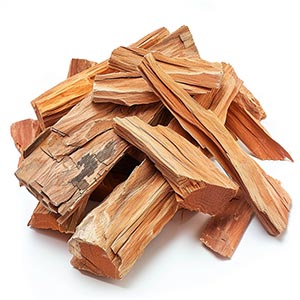Indian Sandalwood, scientifically known as Santalum album, is highly esteemed in perfumery for its rich, woody, and creamy aroma. It differs from other types of sandalwood due to its unique scent profile and the specific environmental conditions in India that contribute to its growth. Historically, Indian Sandalwood has been revered not only for its fragrance but also for its cultural and spiritual significance. In perfumery, it has been used for centuries, valued for its long-lasting scent and ability to blend well with other fragrances. Indian Sandalwood adds a warm, deep, and exotic character to perfumes. It acts as an excellent base note, providing a grounding effect and enhancing the longevity of the fragrance. Its versatility makes it a popular choice in a variety of fragrance families, from woody to oriental scents.
Natural or Synthetic?
Indian Sandalwood is used in both natural and synthetic forms in perfumes. Natural sandalwood oil is extracted from the heartwood of mature trees through steam distillation. However, due to the scarcity and high cost of obtaining natural sandalwood oil, synthetic alternatives are often used. Synthetic sandalwood, made using compounds like Ebanol and Javanol, attempts to mimic the scent of natural sandalwood. These synthetic versions are more sustainable and cost-effective, although they may lack the depth of the natural oil.
Fragrance Families Indian Sandalwood Most Commonly Found In
Show fragrances that contain Indian Sandalwood as a note



